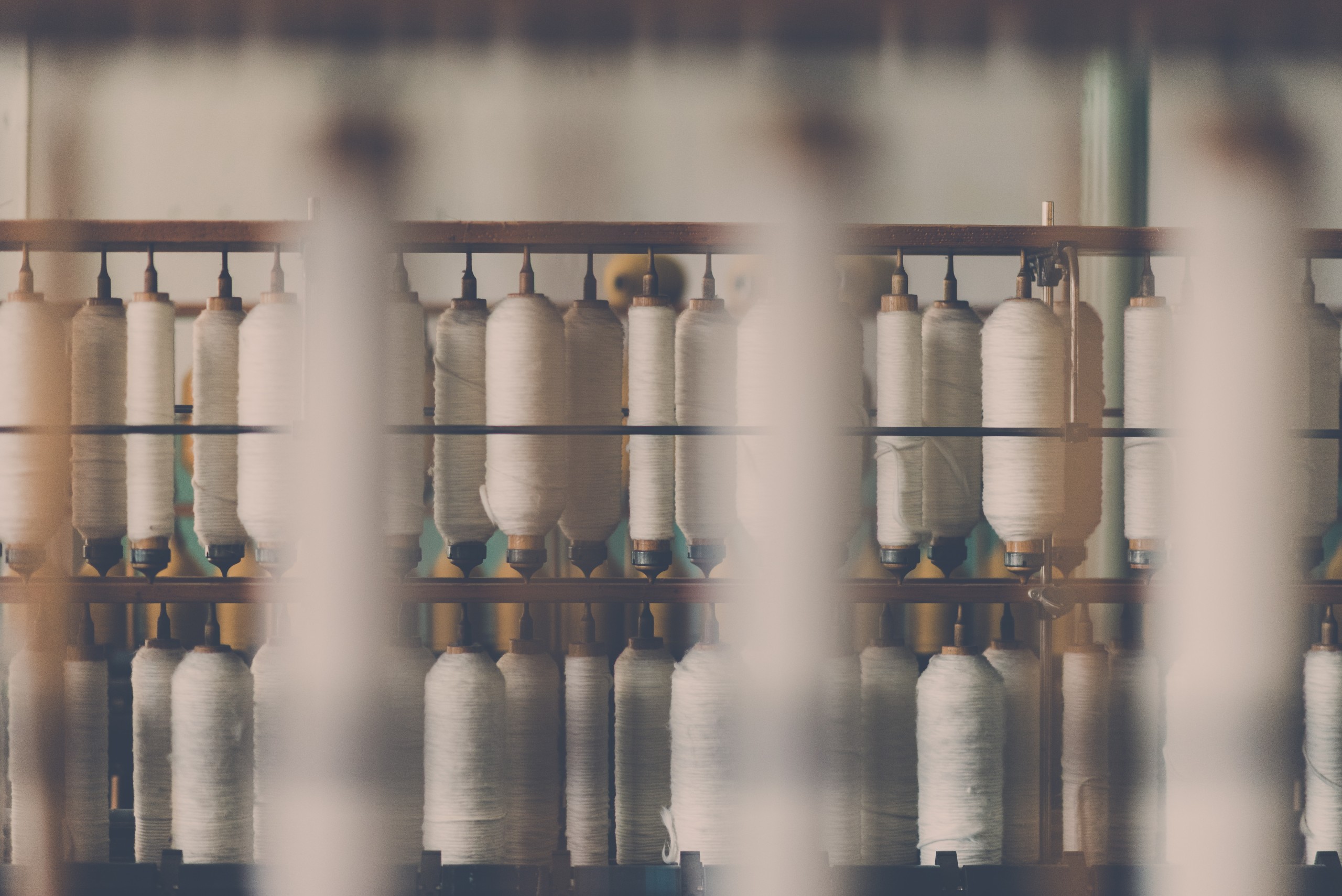In this blog, we take a look into the changing landscape of fashion manufacturing, with particular focus on Asian fashion factories. We’ll explore how shifts in worker attitudes, as well as consumer expectations are driving a shift towards more sustainable supply chains, and what this will mean for the factories.
Introduction: The Changing Landscape of Global Manufacturing
The world of manufacturing, particularly in the realm of fast fashion, has long been synonymous with Asia’s bustling factory floors. The region has played a pivotal role as the epicentre of mass production, manufacturing an array of consumer fashion goods that have reached every corner of the globe. Incredibly, Asian factories are responsible for 70% of fashion supplied to the EU.
However, as we step into a new era, the foundation of this manufacturing model is shifting. The rise of fast fashion was fuelled by the availability of ultra-cheap labour in these supply chains, drawing upon a young workforce willing to be part of the production line. But this is changing.
Today, these factories find themselves at a crossroads, grappling with a number of significant challenges. These include the changing attitudes of a young workforce demographic no longer willing to work in the factories, as well as huge changes in global sustainability legislation. These challenges are likely to drive huge shifts in global manufacturing and the availability of super cheap fast fashion.
What Are Some Of The Challenges Faced By Factories In The Fashion Supply Chain?
Changing attitudes of a young workforce demographic, particularly in Asia, are creating a huge set of challenges for manufacturers in the area. This has the potential to reshape industry and supply chain dynamics, both in Asia and globally.
Some of the key challenges facing manufacturers in Asia include:
Legislation and Frameworks
Legislation across the globe is forcing clothing brands to rethink their traditional suppliers, such as Asian factories. In 2022, the European Union Strategy for Sustainable and Circular Textiles was passed, and it details significant changes needed for clothing to become sustainable. The framework states that new products must be made from mainly recyclable materials, as well as protections across the supply chain for labourers and working conditions. For Asian factories who competed mainly on the ability to be the cheapest, this will have a huge impact.
Labour Shortages and Turnover
One of the most pressing challenges is the scarcity of labour. The younger generation’s increasing reluctance to work in factories means that factories are struggling to find and retain a skilled workforce. This shortage can lead to production delays, reduced fashion output, and increased labour costs as factories are forced to compete for the available workforce. Additionally, younger workers who do enter the factory workforce tend to not stay; creating higher turnover.
Quality Control Concerns
In industries that require precision and attention to detail, a transient workforce can lead to compromised quality control. Frequent turnover and lack of experienced workers can affect the consistency and quality of fashion garments, potentially damaging brand reputation.
Innovation and Adaptation
Changing attitudes require factories to innovate and adapt their operational practices. This change can be slow and costly, involving redesigning workspaces, redefining roles, and implementing new technologies to engage workers and enhance productivity.
Increased Costs and Reshoring
As a response to labour shortages, factories may need to increase wages to drive retention. As a result, production costs can increase, leading brands to outsource to other regions or even reshoring manufacturing. This can disrupt established supply chains and potentially impact the economic vitality of certain regions.
Retailers might opt for nearshoring or onshoring, relocating supply chains closer to final markets. For EU retailers, in this context, places like Turkey or eastern European countries, which may not be the cheapest but align more with EU standards, could be more feasible for suppliers.
In the new era of slow fashion, where consumers prioritise fewer products made from sustainable materials in smaller quantities, the sourcing landscape might undergo significant changes. Asian countries, while skilled at producing inexpensive goods in large volumes, may no longer be the optimal choice for sourcing such products.
Shift in Consumer Expectations
Beyond the operational challenges, there’s an increasing need for factories to align their practices with evolving consumer values. As consumers become more conscious of ethical and sustainable production, factories must address these concerns to remain relevant and competitive.
As Asian factories aim to manage to these challenges, their responses will shape the future of manufacturing; influencing how production, their long term viability, the cost of goods, and the overall landscape of the global economy.
How can factories respond?
- Modernising Factory Conditions
In response, fashion manufacturers in Asia are adopting a range of strategies to modernise their working conditions. These initiatives not only aim to make factory jobs more appealing but also seek to enhance efficiency, sustainability, and employee satisfaction. Some of the approaches being employed include subsidised childcare and funding training programs to attract a younger workforce and support families.
However, the industry needs to overcome a significant hurdle – the shifting preferences of the younger generation. Aspiring to creative and expressive professions like photography and styling, young workers are increasingly drawn to industries that align with their passions. Factories face some real dilemmas; modernising is essential in attracting a skilled, diverse and younger workforce, but this is likely to increase costs and change supply chain models.
- Digitisation
The increasing focus on cost within the fashion sector is likely to push brands towards vendor consolidation, driven by the vendors’ ability to digitise. This could increase risks of acquisition. For manufacturers, adopting digitisation will become key in enhancing processes and transparency.
How Will These Changes Impact Global Manufacturing?
This will be a challenging shift for Asian factories, who will need to rethink their manufacturing strategies, workforce and supply chain portfolios. But this also creates real opportunities to make positive changes across global fashion supply chains that support sustainability.
As these factories transition towards improved working conditions and embrace sustainability, several critical shifts are expected. Firstly, rising production costs due to investments in better wages and worker well-being may challenge the very foundation of ultra-cheap fashion. Brands that have thrived on offering rock-bottom prices could find their competitive advantage eroding as consumers increasingly value factors beyond cost.
This transformation also prompts a need for differentiation beyond pricing. Ultra-cheap fast fashion brands might need to pivot towards enhancing product quality and design to remain relevant. Sustainability expectations are growing, with consumers seeking brands that align with ethical practices. This shift could lead to a transition from super-cheap to mid-priced fast fashion, striking a balance between affordability and responsible manufacturing.
In essence, the shifts in Asian fashion manufacturing are compelling ultra-cheap fast fashion to reconsider its strategies, adapt to changing consumer preferences, and navigate a path towards more sustainable and value-driven practices.
What Will This Mean for Consumers and Brands?
While the impacts of this shift will impact fashion factories and manufacturers, the transformation of working conditions within Asian manufacturing will also impact brand and sales strategies for fashion companies.
As the industry moves away from relying solely on ultra-cheap labour and focuses on modernising workplaces, fashion brands will compelled to recalibrate their approaches, business models and market positioning. This will include emphasising product quality, craftmanship, lifetime value and value for money to stand out- rather than simply rock-bottom pricing.
Brands and manufacturers will need to diversify their product offerings, driven by technology and innovation. In addition, ethical and transparent labour practices and working conditions across supply chains will be key to build consumer trust. Brands and manufacturers must collaborate to share values and positive attitudes across the entire garment production cycle.
Here, a focus on sustainability can emerge as a powerful competitive advantage, allowing brands and manufacturers to align their sustainable practices to gain favour and loyalty among conscious consumers. As consumers become more informed about manufacturing practices, the push for ethically and environmentally friendly produced garments will intensify.
Will This Impact Sustainability In The Fashion Industry?
The evolution of Asian fashion factory manufacturing is poised to bring sustainability to the forefront of the fast fashion industry, and the predicted changes in working conditions and manufacturing practices highlight a general focus on sustainability in consumer awareness and expectation.
This will be in a number of ways, including:
Increased Ethical Production Practices
As Asian (and other) fashion manufacturers invest in better working conditions and fair wages, the fast fashion industry will naturally align with more ethical production practices. Brands will need to ensure transparency in their supply chains, highlighting their commitment to workers’ well-being and fair treatment. Emphasis on ethical manufacturing resonates strongly with consumers who are increasingly conscious of the human impact behind their clothing.
Reduced Environmental Impact
The integration of sustainable practices across supply chains and factories will extend to environmental considerations. This shift can lead to a reduction in waste, better waste management practices, and the adoption of eco-friendly materials and production processes. Brands will need to show a commitment to minimising their carbon footprint, reducing water usage, and avoiding harmful chemicals in their production.
Focus on Durability and Versatility
The focus on quality and craftsmanship resulting from improved working conditions will challenge the culture of disposable and damaging fashion. Brands will need to pivot away from encouraging frequent purchases of cheap, short-lived items as part of their brand positioning. Instead, they can focus on producing durable, versatile pieces that have a longer lifespan, aligning with the principles of sustainable fashion.
Increased Consumer Education and Awareness
The changes in manufacturing practices, highlighted in Asian factories but applicable across the global supply chain, can serve as a catalyst for increased consumer education. Fashion brands will have an opportunity to communicate the importance of sustainability and its positive impact on workers, communities, and the environment. Educated consumers are more likely to support brands that prioritise responsible manufacturing and align with their values, becoming loyal consumers that aren’t solely driven by price.
More Accountability and Transparency
As the spotlight shifts towards ethical and sustainable manufacturing, brands will face increased pressure to uphold their sustainability promises. Consumers, authorities and environmental groups will hold brands accountable for their eco-friendly claims; encouraging transparency, traceability and continuous improvement in sustainability practices.
Positive Collaboration and Innovation
The drive towards sustainability in fashion manufacturing will foster collaboration between brands, manufacturers, and industry stakeholders. A collaborative approach can lead to innovative solutions, such as closed-loop production systems, circular fashion models, and more sustainable supply chain practices. This transparency important for long-term sustainability, as well as driving critical changes in consumer purchasing behaviour.
Conclusion
The evolution of Asian fashion factory manufacturing, fuelled by younger demographics and work expectations may serve as an important catalyst for reshaping the priorities and values of the fashion industry.
As sustainability takes centre stage, brands that proactively embrace this shift, invest in responsible practices, and genuinely communicate their commitment to sustainability are poised to not only survive but thrive in an evolving landscape.
This changing nature of global manufacturing offers a key opportunity to create a more sustainable supply chain. However, it’s important to recognise how critical consumer behaviour is in achieving more a more sustainable fashion industry. Consumers must buy less and buy better- and convincing them of this remains a critical challenge.
Textile Consult operates worldwide, consulting on a variety of management, training and sustainability issues within the textile industry. Contact us today to find out how we’ll work with you to find effective, sustainable solutions for your company.


